Overview
Duration: Mar. 2018 - Oct. 2018
This project was designed for the Solar Aircraft project in the 2018 China Aeromodelling Design Challenge (CADC) competition. During this project, we designed and manufactured an aircraft with an empty weight between 2 and 3 kg, which relies entirely on solar panels for power. The aircraft must take off in a slipping manner.
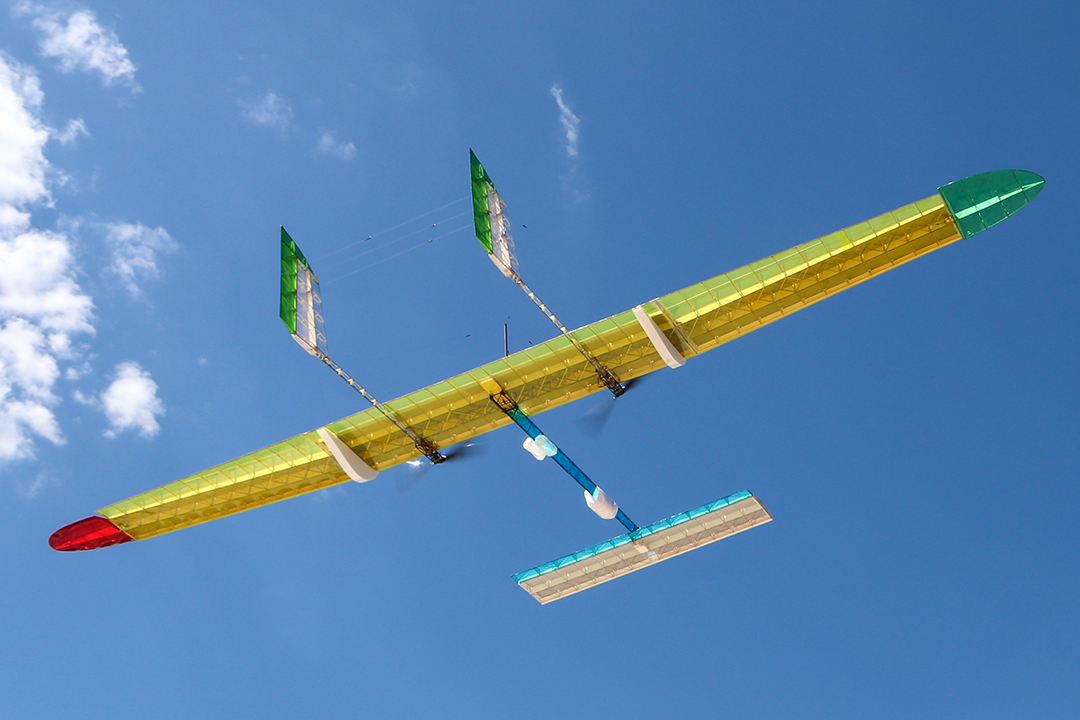
In this project, I was responsible for the production of the wing spar and acted as the PILOT to fly the airplane. During this process, I overcame significant psychological pressure and we finally won the Third Prize of the China Aeromodelling Design Challenge (Solar Aircraft project).
Please refer to the complete rulebook (CN) for more information.
Achievements
The video of the first round. 👇
The video of the second round. 👇Division
All members come from the Beihang Aeromodelling Team.
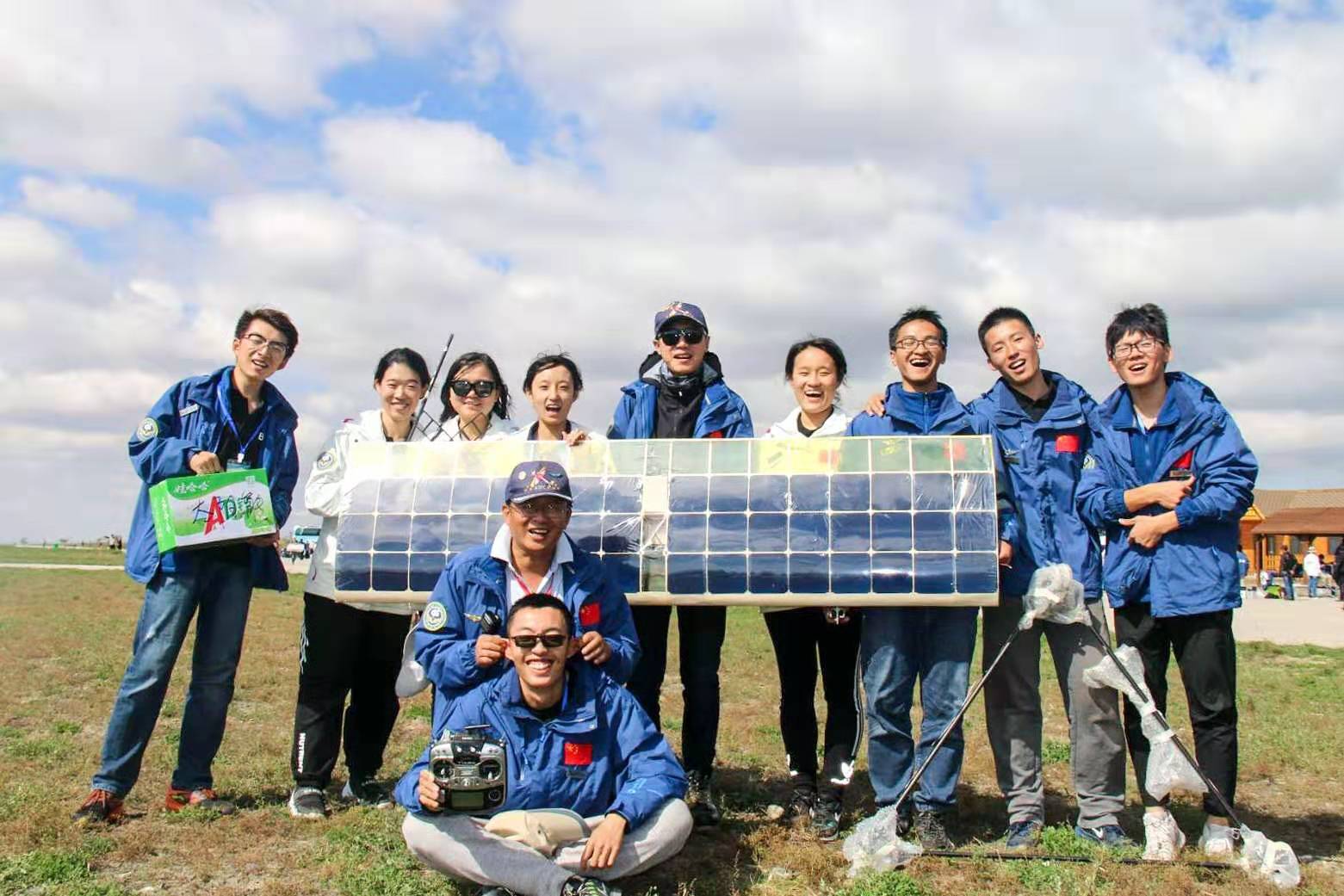
Structural design and production: MA Zhengxiao (team leader), XU Yang (team leader), LI Jinjie, XI Yuhang, MA Jieyin, ZHANG Qi, HU Yating, LI Xi, HUANG Man, HUANG Sihan
Circuit design and solar panel welding: MA Zhengxiao, XI Yuhang, HUANG Sihan, ZHANG Qi, HU Yating
Pilot: LI Jinjie
Instructors: Prof. WAN Zhiqiang, LI Yongxin, WANG Funan
An Introduction to Our Solar Airplane
The aircraft adopts a canard configuration, double-engine, double-tailed, wing-tip aileron design and a 6.15m wing. It also uses a double-beam diagonal bracing structure and composite material spar. The maximum loading mass is 7kg under the ideal illumination of 120,000 lux (based on our detector).
The highlight features are as follows:
- Designed a semi-elliptic wing-tip aileron to solve the aileron reversal problem while reducing the induced drag.
- Improved power system efficiency through reduction gears.
- Increased the torsional stiffness of the fuselage through tensioning lines.
- Added a gyroscope to enhance stability and flight performance.
| Basic design parameters | Value |
|---|---|
| Empty weight | 3kg |
| Maximum take-off weight | 11kg |
| Wing loading | 6.1kg/m2 |
| Total number of solar panels | 120 |
Three-view drawing of the airplane
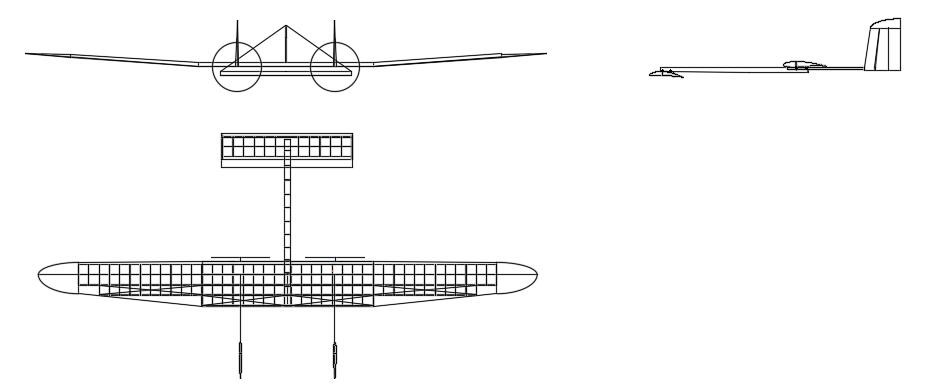
How to Become a Pilot
In the competition, all projects needed to be completed by the pilots. If someone wants to become a pilot, you need to sign up and pass the strict training and examinations. Because it is related to the result of the entire team, the pilot needs to overcome enormous psychological pressure and to complete the game with a calm mind. I was also trained and selected to be a pilot in the Solar Airplane Project in 2018.
-
Beginner stage
We started with a flight simulator. Then, we created some training models and used them to practice flying skills inside our campus.
A flight simulator A training model 
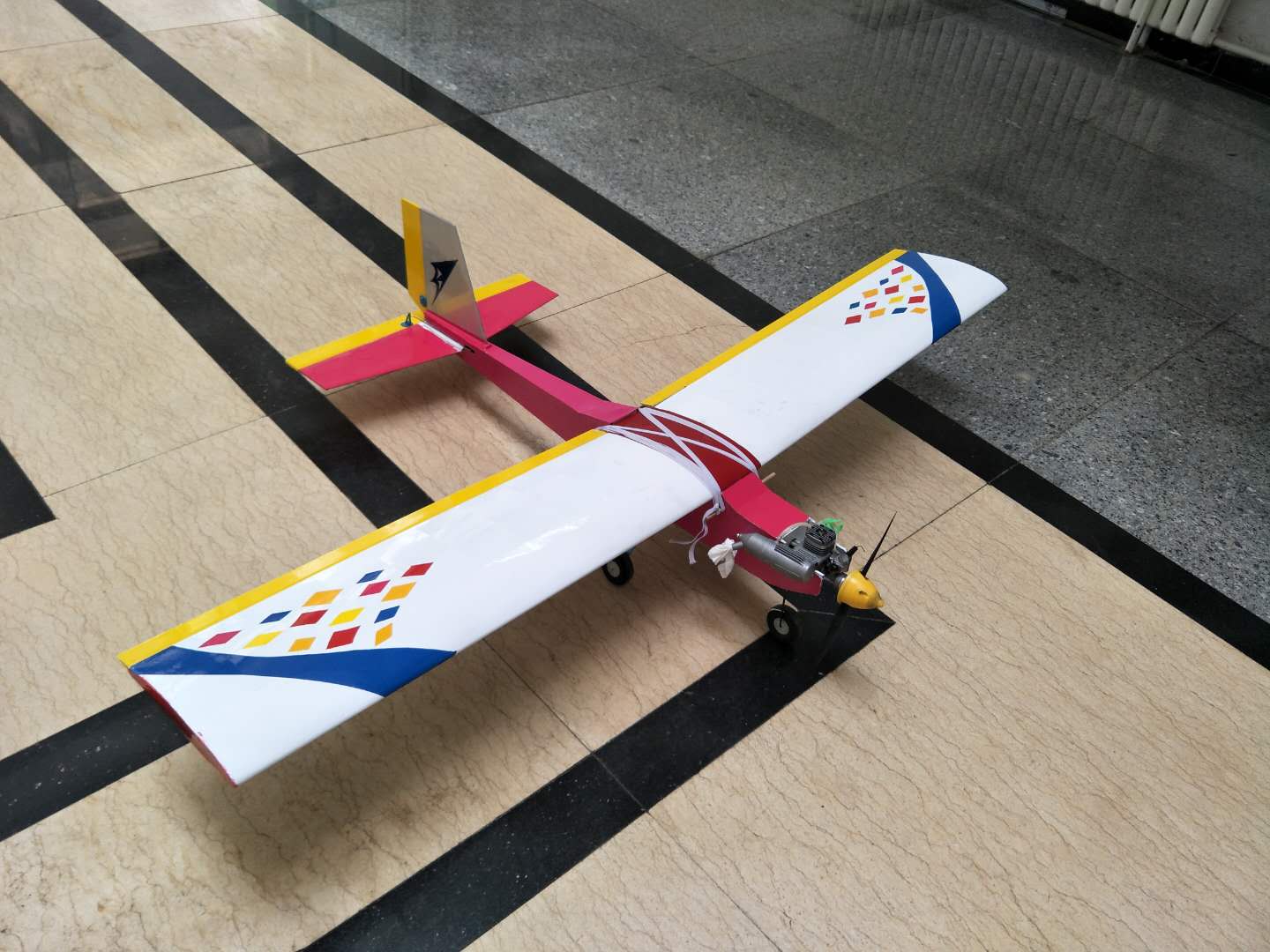
-
Special training in Shi Jia Zhuang
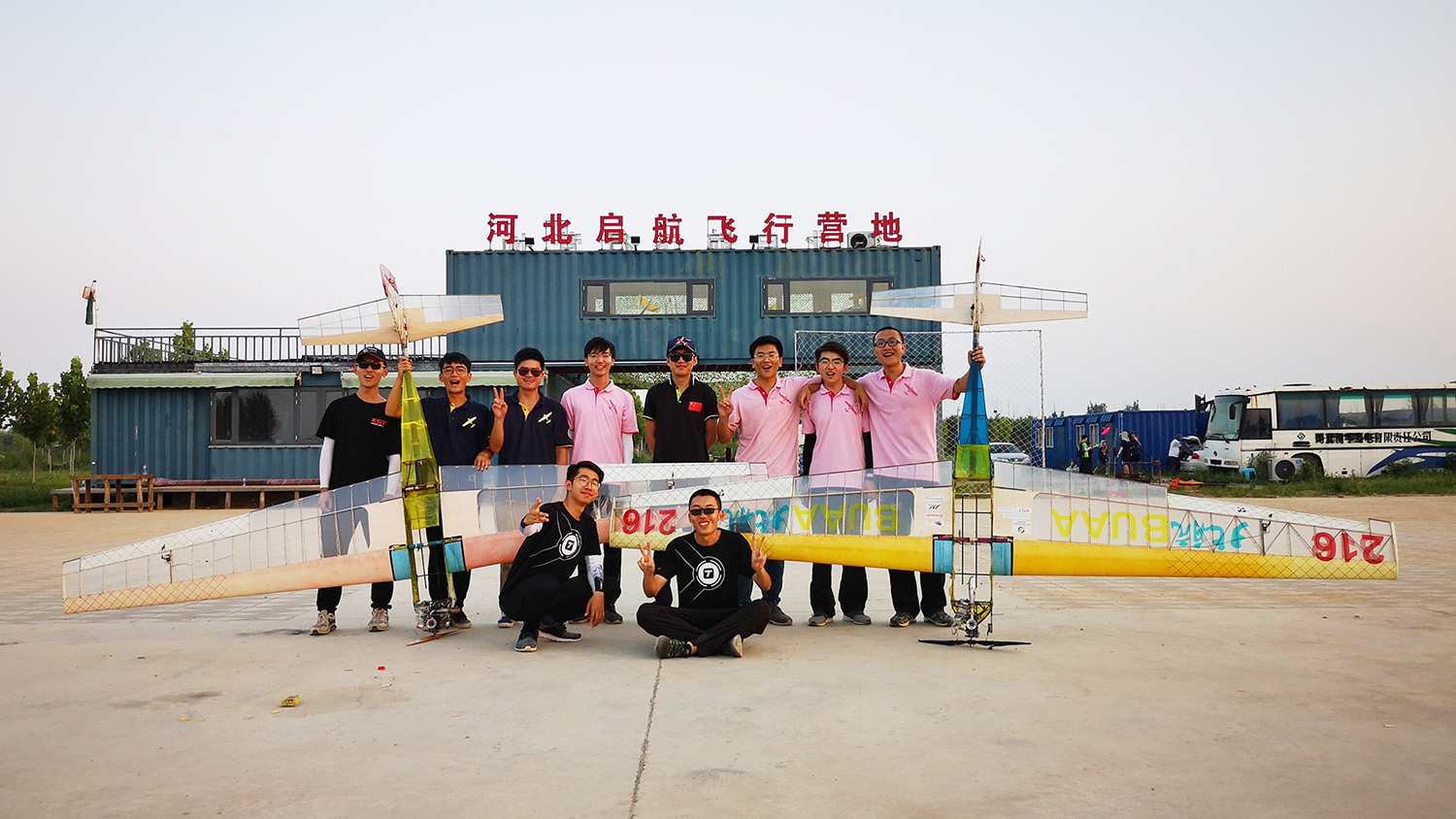
We had a seven-day training program at Shi Jia Zhuang in July 2018. We started with quadrilateral-route training, which meant flying along a rectangle. This exercise required us to turn quickly, maintain the same height, maintain all four sides straight, and maintain the size of the rectangle unchanged. This training deepened our understanding of the flight principles.
Then, I started flying last year’s solar airplane. Initially, the aircraft was powered by batteries. After, it was powered by solar panels.
-
The characteristics of flying the solar aircraft
- The top position of the throttle varies with the sunlight, which makes it difficult to find a proper place for the stick.
- The large size (a wingspan of 5 meters) and the inadequate torsional stiffness cause the weak effect of the wing-tip aileron. This weakness leads to a noticeable delay in the control effect (approximately 4 seconds). Therefore, reaction time should be taken into account.
- The canard configuration leads to weak pitching stability, which requires the pilot to control the pitch balance at all times.
-
Crushing moments and reason analysis
Damage to aircrafts occurs from time to time during the flight. I have outlined my several crash moments as follows:
(1) 👇This accident happened during training in Shijiazhuang, because I let the airplane fly too far. 🐤 & ✈
(2) 👇This accident was entirely due to my mistake, two weeks prior to the competition. The wind was very powerful that day 💨, and I was terrified to fly, so I unconsciously turned down the throttle during the take-off stage. That was when I learned there should be **NO HESITATION** when taking off. This was helpful when I faced similar weather conditions two weeks later. (3) During the second round of the CADC, I failed to fly the plane for ten minutes. The video is at the beginning of this page. After analysis, I believe the reasons are as follows:ⅰ. One of the fuselage connections came loose.
| The first round | The second round |
|---|---|
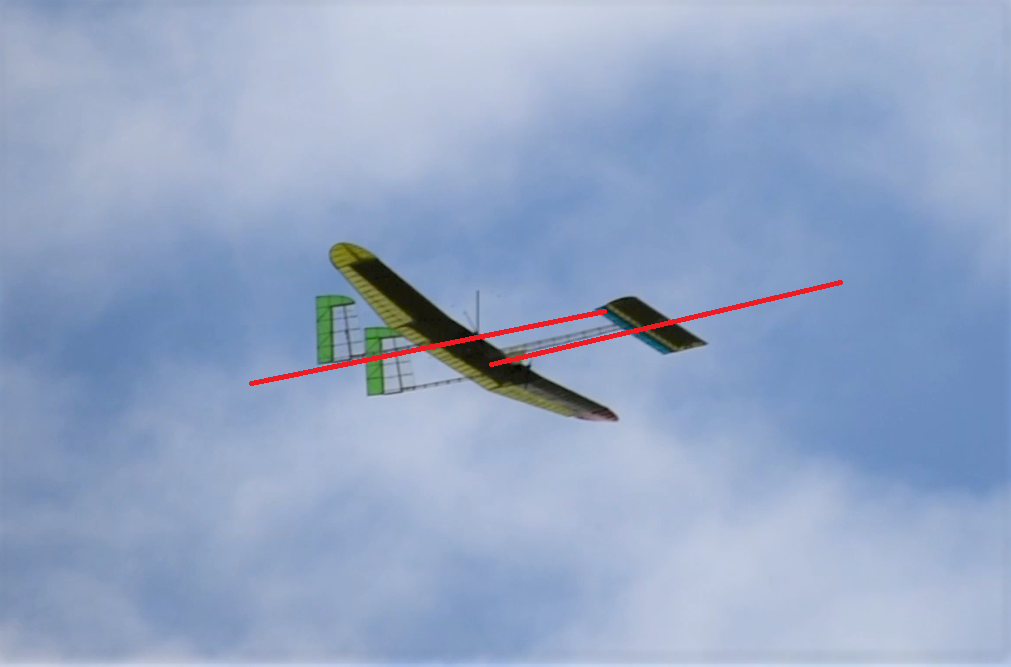 |
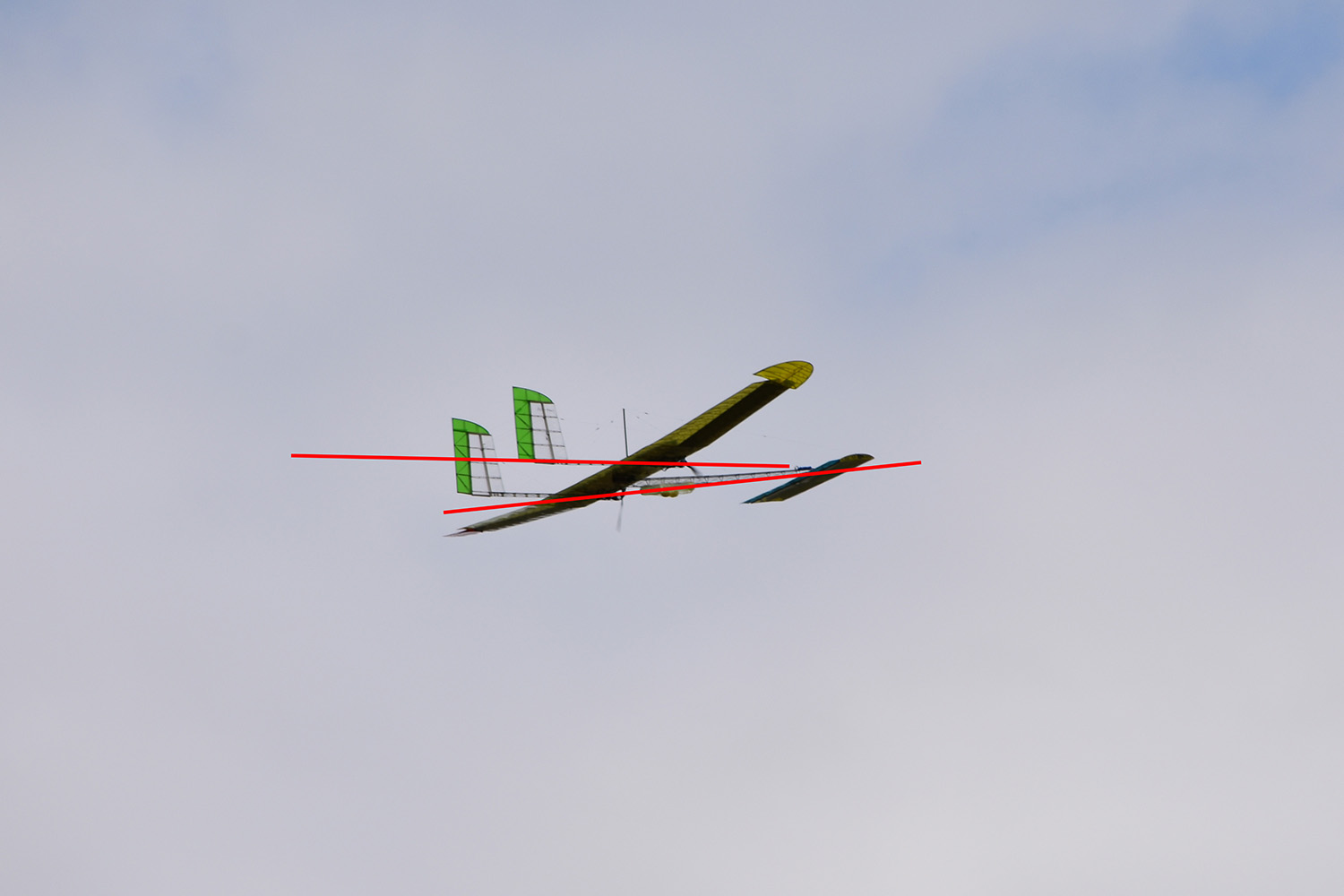 |
From the comparison between pictures from the first and second round, the head of the aircraft turned up after the loading increased, causing the angle of the canard to change. This change made it extremely difficult to balance the aircraft in the pitch direction. After the competition, we identified that this was because the fuselage connection came loose.
ⅱ. Weather condition. 🌥
By the time we were flying on the second round, clouds had suddenly blocked the sun, causing a severe power loss.
ⅲ. My flying skills were not good enough.
Regardless, I really cherished this opportunity to be a pilot. After many failures, my flying skills have improved a lot and I have also developed a stronger heart! 😎